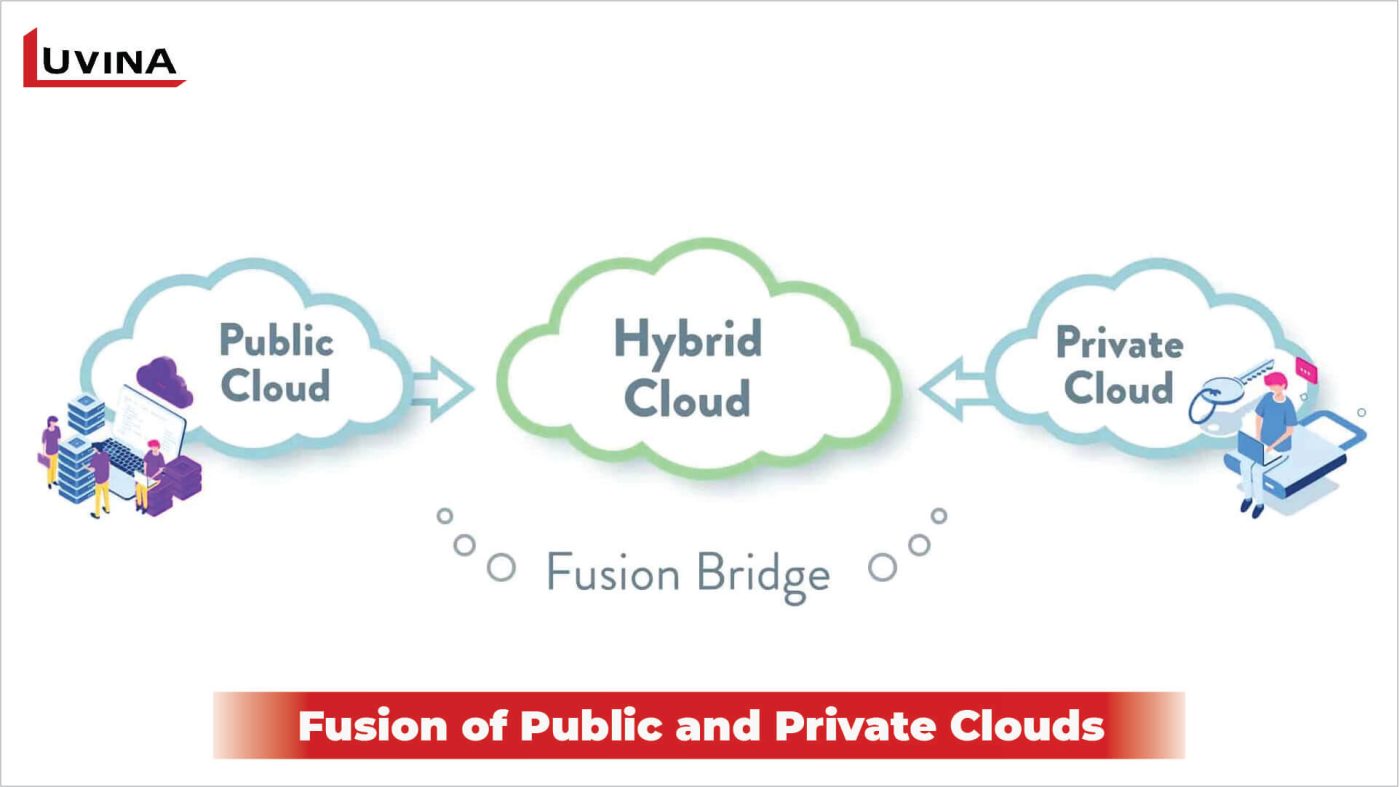In today’s fast-paced digital landscape, businesses are increasingly turning to hybrid cloud deployment models to meet their diverse IT needs. Hybrid clouds offer a flexible and powerful solution by combining the strengths of both public and private cloud infrastructures. In this article, we will delve into the world of hybrid cloud deployment models, unraveling the numerous advantages they provide to organizations.
Understanding Hybrid Cloud Deployment Models
Hybrid cloud deployment models, as the name suggests, combine elements of public and private clouds. This approach allows businesses to leverage the public cloud for certain workloads and applications while keeping critical data and operations within a private cloud or on-premises infrastructure. The synergy between these two cloud types creates a versatile solution tailored to the organization’s requirements.

Advantages of Hybrid Cloud Deployment Models
Hybrid cloud deployment models offer a range of benefits that are driving their adoption across various industries. Let’s explore these advantages in detail:
1. Scalability and Flexibility
The scalability and flexibility inherent in hybrid cloud deployment stand as primary advantages for businesses, enabling the dynamic adjustment of resources in response to fluctuating demand. This adaptability ensures optimal performance levels, aligning seamlessly with the dynamic nature of today’s market landscapes. The ability to scale resources—whether scaling up during peak demands or scaling down during quieter periods—empowers businesses to meet evolving workload demands effectively. This adaptability is especially vital in today’s fast-paced market, where workloads can fluctuate rapidly.
The hybrid cloud’s capability to accommodate these changes ensures a seamless user experience, maintains consistent performance, and supports the agility required to swiftly respond to market dynamics. This scalability and flexibility afforded by the hybrid cloud architecture position businesses to optimize resource utilization, enhance operational efficiency, and cater to varying workloads efficiently, ensuring an agile and responsive infrastructure capable of meeting evolving business needs.
2. Cost Optimization
Hybrid cloud models enable businesses to optimize costs effectively by strategically allocating workloads to the most suitable environment based on their specific requirements. This strategic allocation allows for the reduction of infrastructure expenses by leveraging the strengths of different cloud environments. For instance, non-sensitive data or less critical applications can be directed to the more cost-efficient public cloud model, benefiting from its scalability and cost-effectiveness.
Conversely, sensitive data and mission-critical applications can remain within the secure confines of the private cloud, ensuring compliance, enhanced security, and data protection. This allocation strategy ensures that resources are used efficiently and economically, capitalizing on the cost-effectiveness of the public cloud while safeguarding sensitive information in a more controlled and secure private cloud environment. By harnessing the hybrid cloud’s ability to allocate workloads based on specific needs, businesses can achieve a balanced approach, optimizing costs without compromising security, compliance, or performance.
3. Enhanced Security and Compliance
Hybrid clouds offer an enhanced level of security and compliance by allowing critical data and sensitive operations to reside within the secure confines of the private cloud model, while less sensitive tasks leverage the resources of the public cloud. This strategic segregation ensures that sensitive information remains protected, meeting stringent compliance standards set by industry regulations or internal policies. By harnessing the security protocols, encryption mechanisms, and access controls inherent in the private cloud environment, businesses can safeguard critical data, ensuring confidentiality, integrity, and availability.
Simultaneously, offloading less sensitive tasks to the public cloud grants access to its vast resources and scalability without compromising security or compliance. This bifurcation between public and private clouds not only fortifies security but also ensures that sensitive information is shielded within a controlled environment while taking advantage of the scalability, cost-effectiveness, and flexibility offered by the public cloud.
Overall, this segregation within the hybrid cloud framework enables organizations to achieve a harmonious balance between security, compliance, and resource utilization, ensuring that critical data remains protected while optimizing performance and efficiency.

4. Disaster Recovery and Redundancy
The hybrid cloud architecture serves as an ideal solution for disaster recovery and redundancy, offering businesses a robust mechanism to mitigate the impact of outages or data loss. In the event of an unforeseen outage or data loss scenario, organizations can seamlessly transition to backup resources within the private cloud or alternate data centers integrated into the hybrid infrastructure.
This redundancy strategy significantly minimizes downtime and data loss, safeguarding business continuity and ensuring uninterrupted operations. Leveraging the hybrid cloud’s distributed architecture, organizations can establish failover mechanisms, and replicate critical data, and applications across multiple locations or clouds, thus reducing the risk of single points of failure.
This redundancy feature within the hybrid cloud framework empowers businesses to maintain operational resilience, swiftly recover from disruptions, and uphold service availability, demonstrating its pivotal role in bolstering disaster recovery strategies and ensuring continuous business operations even in adverse scenarios.
5. Data Management and Optimization
Hybrid clouds provide an effective framework for data management and optimization by enabling organizations to categorize and allocate data based on its importance and sensitivity. This segregation allows organizations to designate less critical or non-sensitive data to the public cloud while housing sensitive or high-priority data within the secure confines of the private cloud.
Such a strategic approach streamlines data access and management, optimizing operational efficiency and resource utilization. By leveraging the public cloud’s scalability and cost-effectiveness for less critical data and harnessing the security and control features of the private cloud for sensitive information, organizations achieve a balanced data management strategy. This segregation not only enhances data security and compliance but also optimizes access and management processes, ensuring that resources are allocated efficiently, data remains organized, and operations run smoothly within the hybrid cloud environment.
Factors to Consider

When transitioning to a hybrid cloud deployment model, businesses must factor in various critical elements to ensure a seamless and advantageous integration. Data sensitivity stands as a primary consideration, determining which data should reside in the private or public cloud model based on its criticality and sensitivity levels. Scalability needs are equally important, requiring assessment to determine which workloads or applications require dynamic scalability and which may benefit from the scalability offered by the public cloud. Compliance regulations play a vital role, in guiding decisions on data residency, security measures, and adherence to industry-specific standards within the hybrid environment.
Additionally, considering long-term objectives aids in aligning the hybrid cloud strategy with future business goals, ensuring scalability, adaptability, and agility over time. Careful planning encompassing these factors enables businesses to fully capitalize on the benefits offered by hybrid clouds, fostering an environment that optimizes resource utilization, enhances operational efficiency, ensures compliance, and meets evolving business needs seamlessly within the hybrid cloud ecosystem.
>> Also read: Elevate Your Cloud Software Development Life Cycle with CI/CD
Conclusion
Hybrid cloud deployment models have emerged as a strategic choice for organizations seeking the perfect balance between flexibility, performance, and cost-efficiency. The advantages of scalability, cost optimization, security, redundancy, and data management make the hybrid cloud a powerful solution for meeting diverse IT requirements. By thoughtfully assessing their unique needs and long-term goals, organizations can embrace the benefits of hybrid clouds and adapt to the ever-evolving digital landscape.
In a world where digital agility is essential, hybrid cloud deployment models will likely continue to be an integral part of businesses’ IT strategies. By harnessing these advantages, organizations can navigate the cloud ecosystem confidently while achieving their objectives.
{ Get everything you ever
wanted to know about IT.}
Read More From Us?
Sign up for our newsletter








Read More From Us?
Sign up for our newsletter
Read More From Us?
Sign up for our newsletter